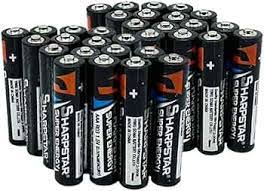When it comes to choosing the right deep cycle battery for your RV, boat, or off-grid power system, the group 24 vs group 27 deep cycle battery often come up in comparison. Both have their strengths and are designed for different needs, so understanding their differences can help you make an informed decision. In this blog post, we’ll break down the key features of Group 24 and Group 27 deep cycle batteries, their advantages, and which might be the best fit for your specific requirements.
1. Understanding Deep Cycle Batteries
Deep cycle batteries are designed to provide a steady amount of power over an extended period and are ideal for applications that require sustained energy, such as in RVs, boats, and solar power systems. Unlike starting batteries, which are designed for short bursts of high power, deep cycle batteries can be discharged and recharged repeatedly without significant degradation.
2. Group 24 Deep Cycle Battery
Specifications:
- Dimensions: Approximately 10.25 x 6.75 x 9 inches
- Capacity: Typically around 70-85 amp-hours (Ah)
- Weight: Generally 40-50 lbs
- Common Uses: Smaller RVs, boats, and small solar systems
Advantages:
- Compact Size: Group 24 batteries are more compact, making them suitable for smaller spaces where a larger battery might not fit.
- Cost-Effective: They are usually less expensive than Group 27 batteries, offering a more budget-friendly option for those with lower power needs.
- Adequate Power: For applications with moderate power requirements, a Group 24 battery provides sufficient capacity and performance.
Disadvantages:
- Lower Capacity: Compared to Group 27 batteries, Group 24 batteries have a lower amp-hour capacity, which may not be ideal for high-demand applications.
- Shorter Runtime: They may need to be recharged more frequently in high-consumption situations.
3. Group 27 Deep Cycle Battery
Specifications:
- Dimensions: Approximately 12.06 x 7.75 x 9.25 inches
- Capacity: Typically around 80-105 amp-hours (Ah)
- Weight: Generally 50-60 lbs
- Common Uses: Larger RVs, boats, and extensive solar power systems
Advantages:
- Higher Capacity: Group 27 batteries offer more amp-hours, providing longer run times and the ability to handle higher power demands.
- Extended Runtime: Ideal for applications that require more power and longer usage between charges, such as larger RVs or boats with multiple electrical systems.
- Better Performance: With a higher capacity, Group 27 batteries can handle larger loads and provide more consistent performance.
Disadvantages:
- Larger Size: Their larger size means they require more space, which might be an issue in compact setups.
- Higher Cost: Group 27 batteries are generally more expensive due to their increased capacity and performance.
4. Choosing the Right Battery
When deciding between Group 24 and Group 27 deep cycle batteries, consider the following factors:
- Power Requirements: Assess the total power consumption of your system. If you have higher power needs or want longer runtime, Group 27 might be the better choice.
- Space Constraints: Ensure the battery size fits the available space in your RV, boat, or power system. Group 24 is more compact and might be suitable for tighter spaces.
- Budget: Consider how much you are willing to spend. Group 24 batteries are generally more affordable, while Group 27 batteries offer higher capacity at a higher price.
5. Conclusion
Both Group 24 and Group 27 deep cycle batteries have their unique advantages and are suited for different applications. Group 24 batteries are ideal for smaller, less power-intensive setups, while Group 27 batteries are better for larger systems requiring more power and longer runtimes. By evaluating your specific needs and constraints, you can choose the battery that best fits your situation, ensuring reliable performance and efficiency for your power systems.



